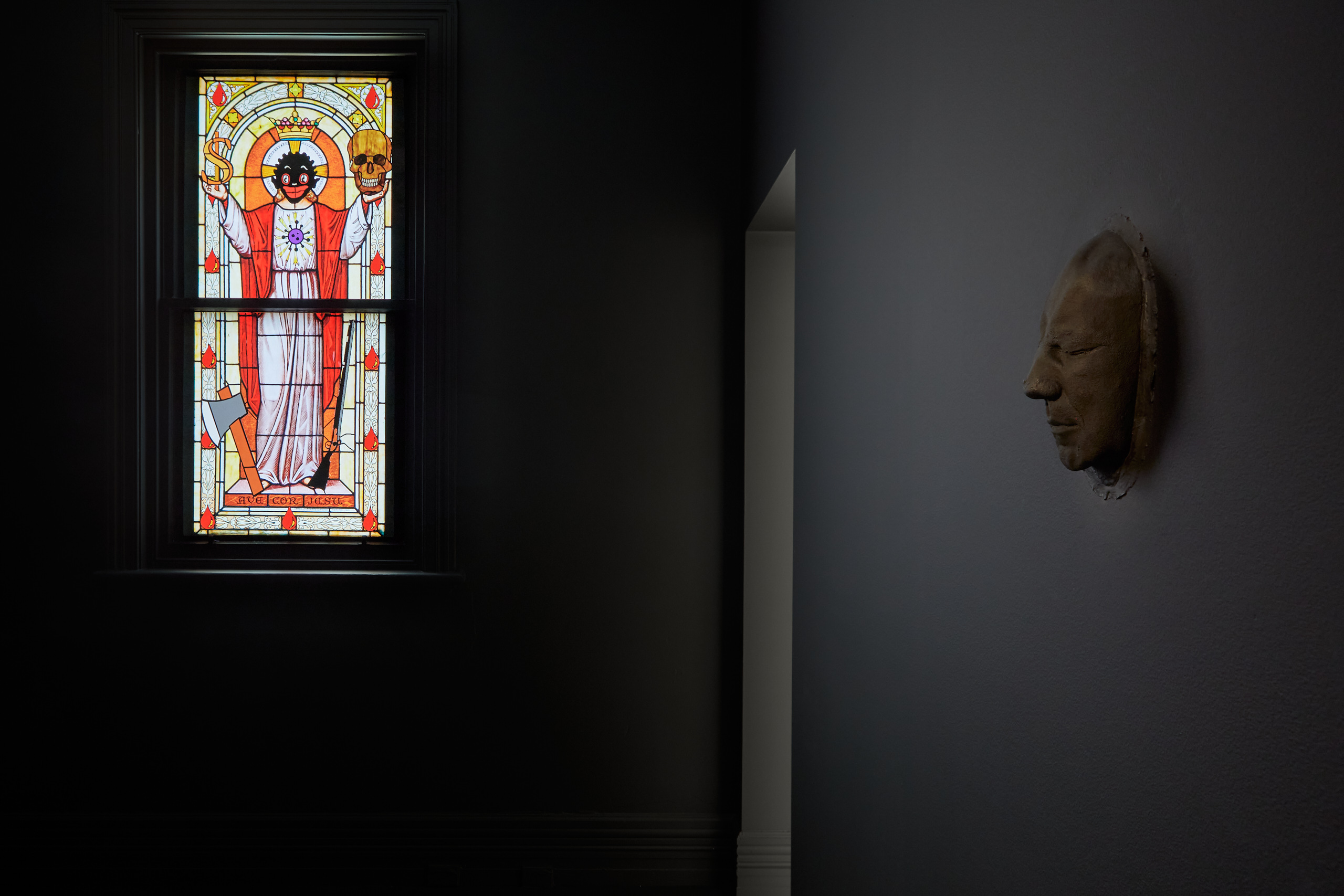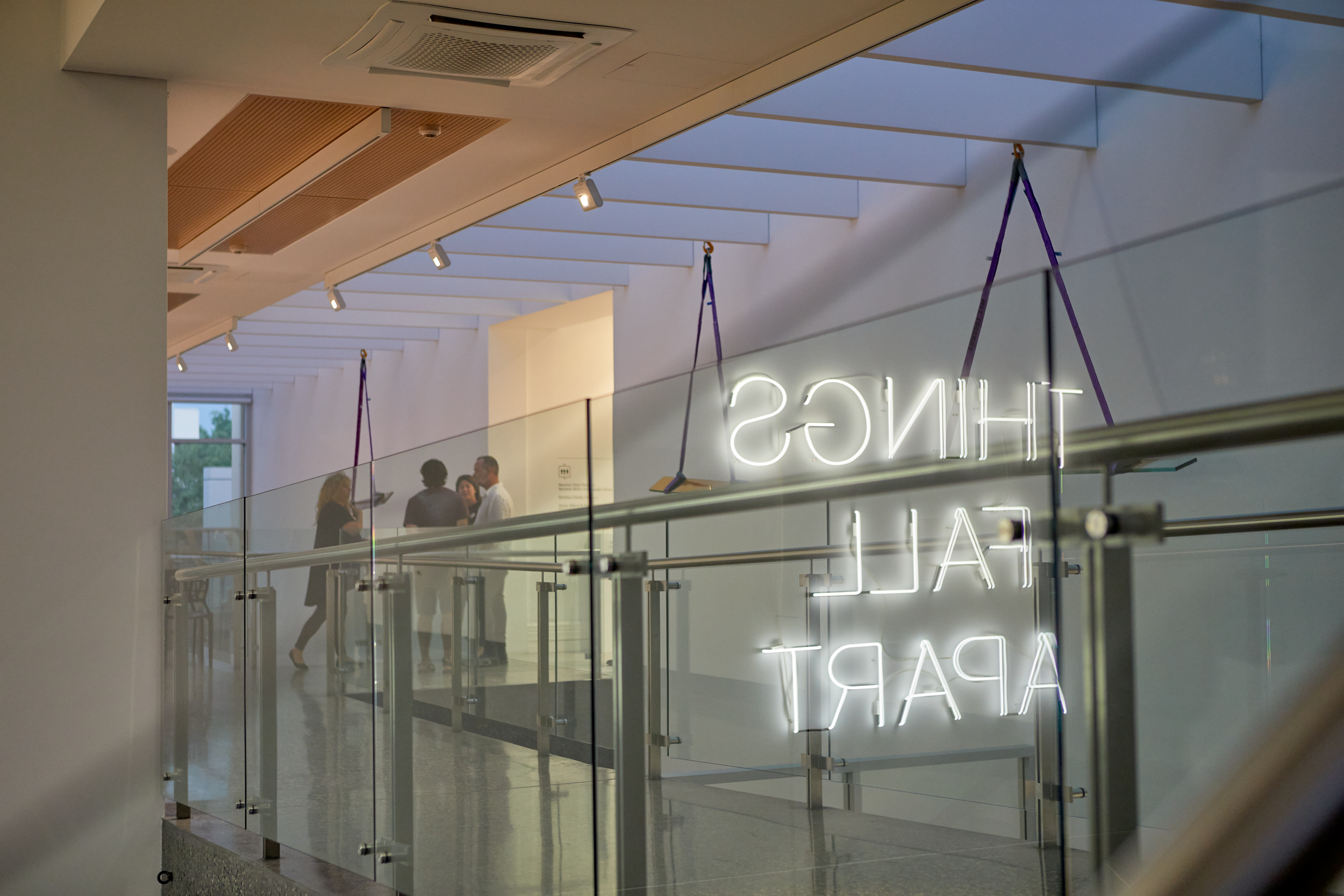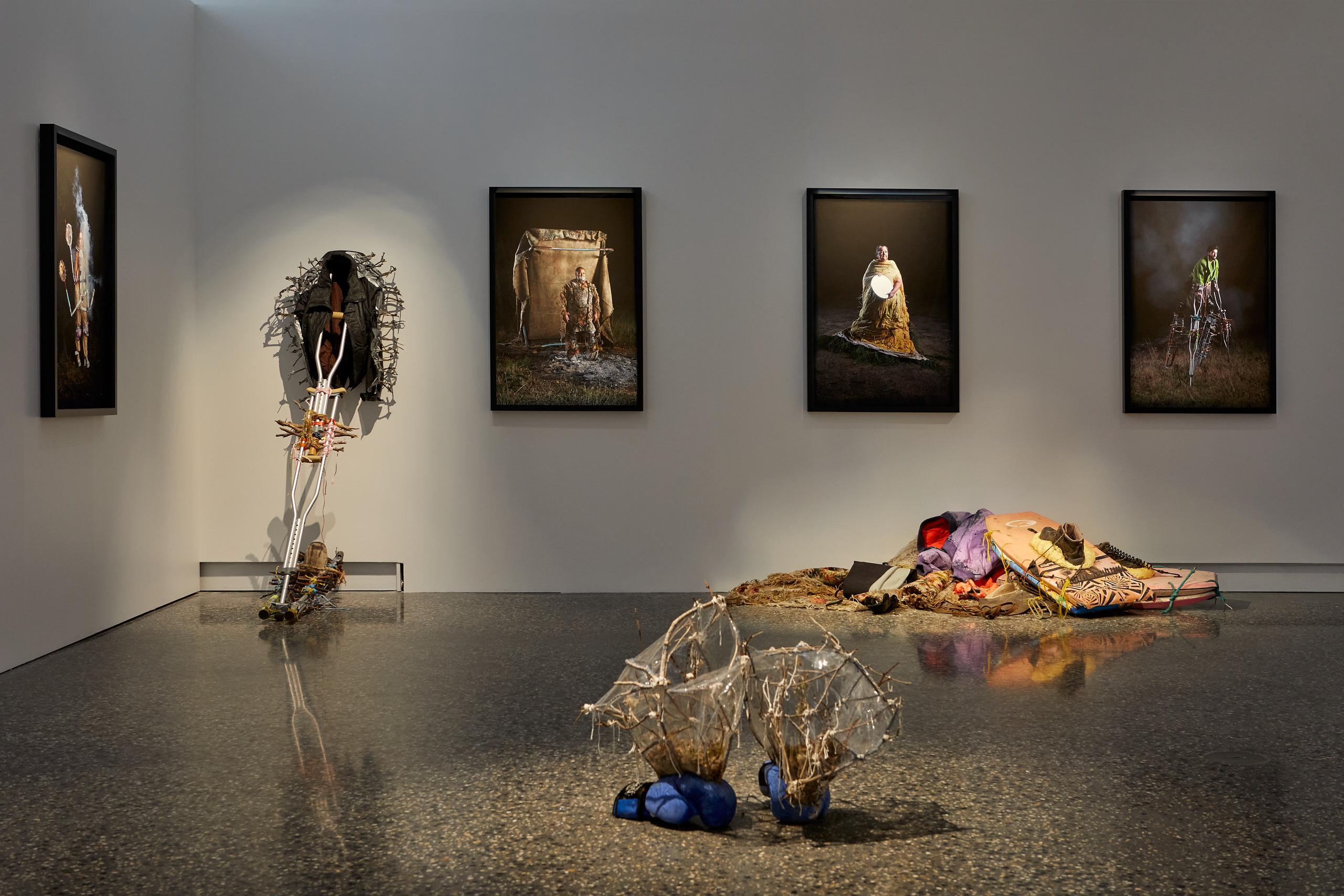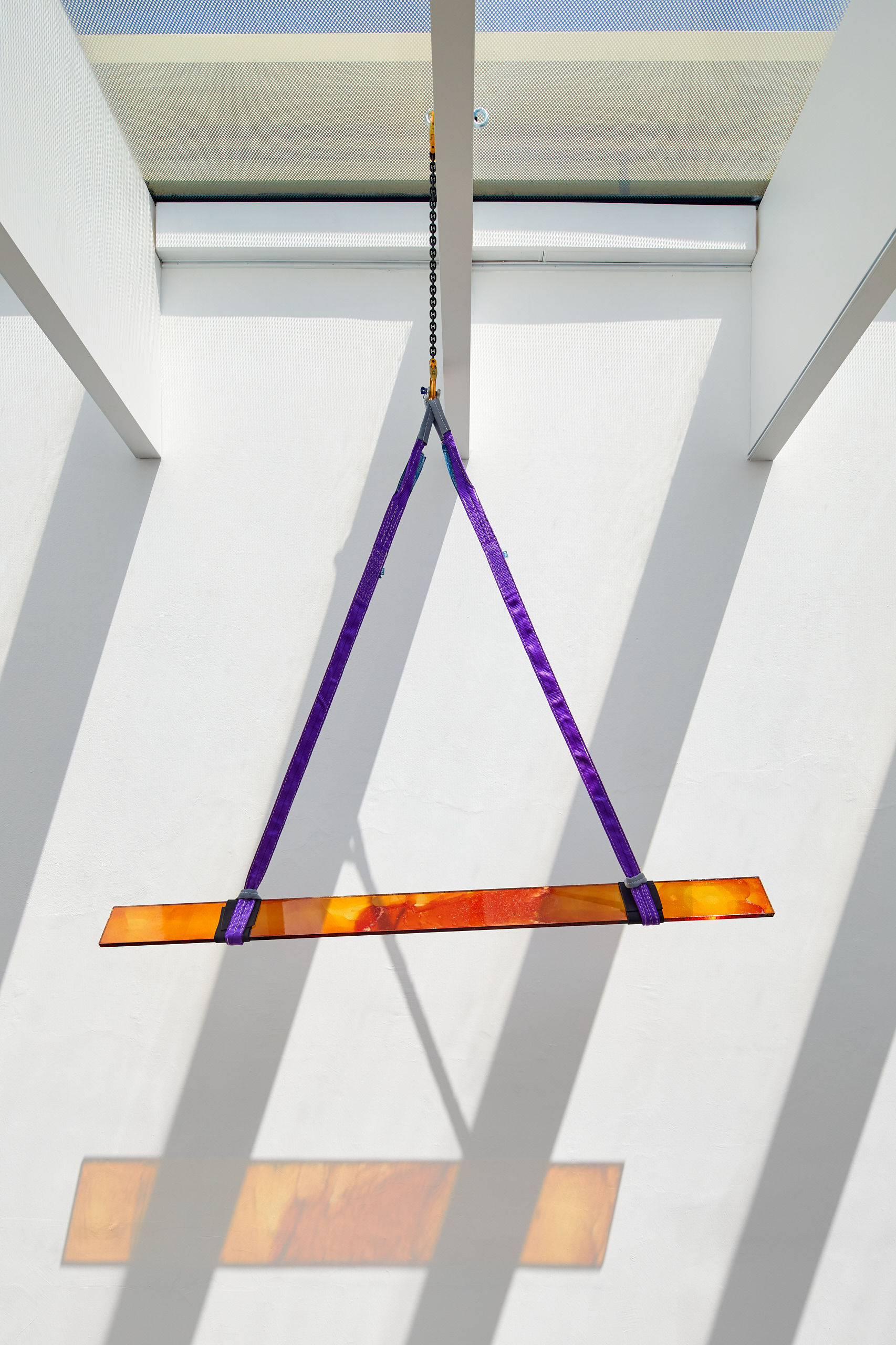This week, we welcome contributing authors Michael Moran and Emily Mulvihill. Michael Moran is the Curator, Murray Art Museum Albury and has previously held roles with Sherman Contemporary Art Foundation, Sydney; Museum of Contemporary Art Australia; Sydney, Whitecube, London; and served as a Director of the artist run initiative Firstdraft, Sydney between 2005 and 2007. Emily Mulvihill is the Registrar at the Murray Art Museum Albury. Emily is a trained paintings conservator and specializes in Modern and Contemporary paintings. She has worked as a painting conservator at the Museum of Modern Art and Amann + Estabrook Conservation Associates in New York. Previously she held roles at the Australian War Memorial and the National Gallery of Australia.
The Murray Art Museum (MAMA) is located on Wiradjuri Country in Albury, New South Wales, Australia. MAMA believes in the power of art and artists to inspire, challenge, and strengthen our community, enriching the cultural life of the Albury region and ranking among the leading art museums and galleries in Australia. Our mission is to be a significant contemporary art and cultural destination in regional New South Wales and to provide the best contemporary art to the people of our region and those who visit our city, encouraging new experiences in art and culture.
In response to the global pandemic, MAMA embarked on the exhibition 20:20 that dealt with the conditions of the 2020 COVID-induced shutdown in a unique and innovative way. With long planned projects postponed and an uncertain shutdown timeline, 20:20 was devised as an exhibition with change and disruption considerations from the outset.
Things fall apart: The centre cannot hold…[1] So goes Yeats’s often quoted poem.
Thankfully, 20:20 is an exhibition built without a centre, the product of an uncertain time that has layered change on top of crisis, alongside cultural and historical reckoning; like our time, it is an exhibition of many things, side by side, all at once.
Seeking to support artists at a time of great uncertainty, MAMA commissioned twenty artists from our region and across the nation to produce new work for 20:20. The resulting exhibition offered twenty perspectives running from critiques of globally felt issues of climate emergency, the BLM movement and economic injustice to intimate and resilient reflections on working in a time of great change. The artwork produced includes site-specific installations, videos, paintings, photography, drawings, and sculpture.
The text above, Things fall apart, is directly quoted in a new neon work by Luke Parker that acts as an orientation point for the exhibition. The words, written by Yeats during the 1918 – 1919 flu pandemic, hung in the museum’s central atrium in capitalized, white neon, text reminding us all that instability is to be expected and time has a way of looping back on itself.
The cultural and social spasms that have emanated from this pandemic were felt in the works of Shan Turner-Carroll, Matthew Griffin, Zoë Marni Robertson, Shan Turner-Carroll, Tiyan Baker and Biljana Jančić.
Shan Turner-Carroll’s experience with COVID forced reflection into his family history and a childhood in regional Australia has produced a haunting but playful work, Edge of the Garden, 2020. This is an installation of photographs and sculptural elements; the photographs capture members of Turner-Carroll’s family wearing sculptures fashioned from “old sportswear, dance costumes, curtains, carpets, knives and flowers” into apparatus designed to interact with the body.[2] These photographs hung on the walls and were interspersed with the sculptures depicted in the photographs. During the COVID isolation, Turner-Carroll went back to the family farm and spent several months making these sculptures that were produced from materials found on the property. In Turner-Carroll’s own words, he describes them as:
The process of inventing, wearing and performing for the camera reveals a central part of my childhood growing up in rural NSW, where boredom was a constant threat and entertainment found its outlets in Easter hat parades, dance eisteddfods, nativity scenes and home-made music videos.
Edge of the Garden both un-earths a family history, at the same time re-earthing that history to my familial (and familiar) environment anew. Boxing gloves become terrariums, and crutches turn into limbs. The resulting imagery lives in the realm of the uncanny, existing between places and times; between vision and blindness, real and imagined, unease and rest. Like animals in headlights, or indeed backyard nocturnal critters exposed by torchlight, my family are re-posed as strange spirits of the unconscious, shape shifters in transition, jewels in the night.[3]
Other artists viewed social issues of our time through a longer historical lens, which for Archie Moore and Rita Wenbverg see disease and separation as part of this history of colonization and its disastrous impacts on First Nations people.

Archie Moore, Unholy Trinity (Colonialism, Christianity and Capitalism), 2020, MAMA Installation View. Photo Jeremy Weihrauch.
Kamilaroi man Archie Moore’s work Unholy Trinity (colonialism, christianity and capitalism) was displayed in Quest Gallery, a small gallery that created an intimate and introspective space. The viewer was able to meditate on Moore’s assertion that “Colonialism, Christianity and Capitalism are arms of the same beast that changed the lives of Aboriginal peoples forever. This beast also brought with it: contagions, confinement, “civilisation”, the Crown, chauvinism and conflict.”[4] In the dimly lit gallery space, Moore created a stained-glass window that replaces the traditional Christian motif of the sacred heart Jesus with contemporary imagery. The central Jesus figure has the head of a racist ragdoll caricature of a minstrel, holding a dollar sign in the left hand and a skull in the right and the sacred heart replaced with a purple coronavirus cell. Opposite the stained-glass window is a gold and red tapestry adorned wooden lectern with a bible with passages cut out. The last component of this Unholy Trinity is a dark grey ‘death mask’ cast from Moore’s own face that blends into the grey gallery walls behind it.
For many artists, 20:20 presents an avenue to continue explorations in their practice at a time when much of our social, cultural and working experience has been contracting. The works of Tarik Ahlip, Mary Jane Griggs, Lisa Sammut, Newell Harry, Robert Hirschmann, Ashlee Laing, and Aida Azin all present, in their various ways, mechanisms for maintaining a creative vision in a moment that lacks clarity. For D Harding, Nicole Foreshew, Shireen Taweel, Tané Andrews, and Susie Losch subtle reverberations of disturbance sit within works that do not address the pandemic directly but which have had the conditions of their making brought into focus by restrictions to movements and some of the broader unknowns of our current situation.
Suspended underneath the skylights that bridge the colonial building and the contemporary extension of MAMA, D Hardling’s The boys – lift consists of glass panels that measure 2m which have been coated with Xanthorrhoea Resin, harvested by D and then applied with the aid of their breath. The uneven dripping application contrasted the industrial manufactured glass and purple lifting straps that hold glass panels. The work is reminiscent of steel beams as they are winched up the side of a skyscraper. There is also an essential interaction of the sunlight with the work: as it casts a reflection onto the wall and moves as the sun moves, it invites the viewer to look up, and contemplate the reflection, offering a point of meditation similar to the stained-glass windows of a church.
The centre may not hold, but that is not cause for despair. Together, the twenty artists of 20:20 illustrate that a networked, democratic, and occasionally dissonant collective is possible. It could be a model for a better world, or at least that’s what we hope for in times like these.
20:20 was MAMA’s most ambitiously scaled project to date. The huge levels of engagement, both in physical attendance and through distributed means, signaled the importance of creating forums for experiencing the art of our times in a challenging environment.
If you wish to explore the exhibition further you can find more details of the exhibition and artists here https://www.mamalbury.com.au/exhibitions/2020
[1] https://www.poetryfoundation.org/poems/43290/the-second-coming
[2] https://www.mamalbury.com.au/exhibitions/2020
[3] Ibid.
[4] Ibid.



